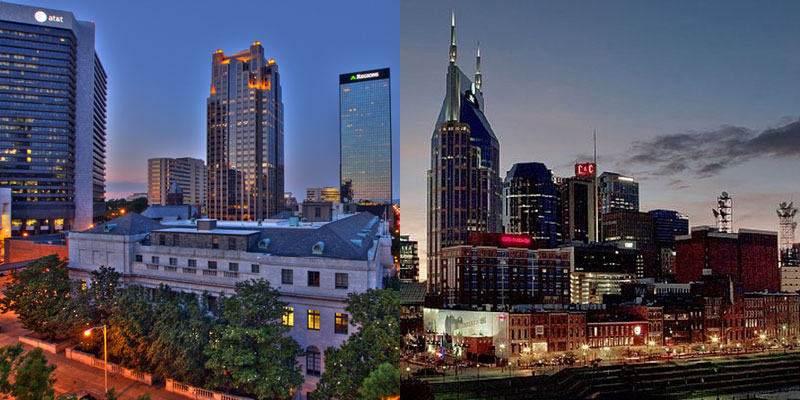In a long-form New York Times article explaining that American midsize cities have been increasingly distinguished as “winners and losers,” Birmingham was the city featured as being most starkly representative of falling behind, while Nashville was hailed as “thriving.”
“Forty years ago, Nashville and Birmingham, Ala., were peers. Two hundred miles apart, the cities anchored metropolitan areas of just under one million people each and had a similar number of jobs paying similar wages. Not anymore,” the author, Ben Casselman, wrote to open the piece.
He explained that the population of Nashville has essentially doubled, with young professionals and high-paying jobs pouring into the city.
“Birmingham, by comparison, has steadily lost population, and while its suburbs have expanded, their growth has lagged the Nashville area’s,” Casselman advised.
The divergent fortunes of the two cities is felt not only in population, but in education and income gaps, too. Casselman used Amazon to paint this picture, outlining that while Nashville is getting “an operations center that will eventually employ 5,000 people at salaries averaging $150,000 a year,” Birmingham’s prize is an under-construction “warehouse and a distribution center where many jobs will pay about $15 an hour.”
After detailing Nashville’s “smart decisions” that paved the way for its current “rising star” status, Casselman came back around to the other end of the spectrum.
“By contrast, economic misfortune and poor choices have hobbled Birmingham. Once a center of steel production, the city suffered when that industry declined in the 1980s because of foreign competition and corporate bankruptcies. Local leaders tried to pivot by luring banks and insurers, but that bet soured during the financial crisis, and the city hasn’t recovered the jobs it lost then,” he wrote.
Casselman added the following on the genesis of Birmingham falling into the “losers” category:
Birmingham’s great boom arrived a century before Nashville’s, when the region’s iron and mineral deposits helped it become one of the nation’s largest steel producers. But as the steel industry declined across the country, Birmingham struggled to find a replacement.
A bet on finance and insurance — the city was at one point a significant regional banking center, home to Regions Financial, SouthTrust and AmSouth Bancorp — proved disastrous in the Great Recession, when the area lost nearly 45,000 jobs. The city still has millions of square feet of vacant office space.
However, that is not to say that Birmingham is down and out.
“A place like Birmingham hasn’t fallen off the map, but it’s been bypassed by these places that have moved into this more clearly defined second tier,” Adam Kamins, an economist for Moody’s Analytics, commented. “It’s treading water, and treading water tends to not be enough.”
While the spoils of the “superstars” like Nashville have come at the expense of Birmingham and others like the Magic City, the right leadership could turn things around. Especially considering some of the hidden gems that Alabama’s largest city has to offer.
Take the University of Alabama at Birmingham (UAB), for example – a preeminent research institution with a top-flight medical school and hospital. Research conducted at UAB has also recently helped fuel a burgeoning start-up scene, including an affiliated incubator, Innovation Depot, that is home to more than 100 new companies.
Casselman also had praise for the vision of Mayor Randall Woodfin, saying that he had placed economic development “at the center of his agenda” since his election last year.
“He has created a Neighborhood Revitalization Fund to fix up homes and demolish dilapidated structures, and wants to use business tax incentives to help lift wages, not just create jobs,” the New York Times author advised.
In his remarks to Casselman, Woodfin acknowledged that Birmingham has a lot of work to do to get its economy to the next level.
“As a midsize city, we have to be very intentional about diversifying our economy,” Woodfin outlined. “I’m not waiting on Amazon or some other company to come in and save Birmingham.”
Even with UAB driving research and putting the city on the cusp of becoming the “Southern Silicon Valley,” the Birmingham metropolitan area simply does not have nearly enough skilled workers and educated professionals right now.
A report released just this year outlines this challenge. Conducted by the research firm Burning Glass Technologies for local business and nonprofit groups, the study found that Birmingham lagged in “traded” industries such as manufacturing and technology, which bring in revenue from elsewhere. Instead, the city relies heavily on restaurants, retailers and other “nontraded” industries, where money mostly passes back and forth between residents.
Woodfin’s city faces another challenge, too. Instead of collaborating, municipalities in the area often compete against one another for economic development projects.
The City of Birmingham accounts for only a third of the population of Jefferson County, with other cities and towns frequently offering multimillion-dollar tax incentives to lure businesses elsewhere.
“It’s less than a zero-sum game — it’s a negative-sum game,” David Sher, a local business owner who runs a blog on economic issues, told the New York Times.
Sher advocates that Birmingham follow Nashville in merging city and county governments. He noted that Louisville saw substantial growth after it did just that in 2003.
However, while the city wants to see brighter days, they have to create their own pathway to success.
“I am 100 percent convinced we do not have to be the next Nashville or the next Austin or the next Charlotte,” Woodfin said. “We can be the best Birmingham.”
Sean Ross is a staff writer for Yellowhammer News. You can follow him on Twitter @sean_yhn













